Discover the history of St. Francis in 10 places between Umbria and Tuscany
St. Francis, of aristocratic extraction, was born in Assisi between December 1181 and September 1182 and, according to one legend, was conceived during a journey to the Holy Land by a couple now advanced in years. Immediately after his miraculous birth, he was baptized by his mother with the name John, but upon his father’s return from France, he was changed to Francis. He participated in his twenties in the war that saw the cities of Assisi and Perugia as enemies. The army in which the boy fought was soon defeated, he was taken prisoner, and after a long year he was finally able to return home, although seriously ill. Once he was cured he set out again headed south in the retinue of Gualtiero da Brienne, but on the way he had his first apparition that prompted him to strip off his soldier’s robes and return home to Assisi. It was from 1205 that his conversion began and there are many episodes that are recounted from this period onward and from here, the clashes and conflicts with friends and especially his father, who did not immediately understand his son’s greatness, begin.
1. The church of San Damiano in Assisi
As recounted by the saint’s first biographer, Thomas of Celano, it was here in 1205 that Francis received a vision of the Crucifix, now preserved at the chapel of St. George in St. Clare, who told him, “Go and repair my church, which as you see is in ruins.” The church of San Damiano in Assisi, built between the eighth and ninth centuries, today is the custodian of an atmosphere of rarefied spirituality, but it was in a state of absolute precariousness when the saint accepted the invitation of the Crucifix, and it was here, moreover, that he composed the Canticle of the Creatures in 1225.Its interior has a single nave covered with an ogival barrel vault that now houses a wooden crucifix from 1637, signed by Innocenzo da Petralia. The vault of the deep apse is lowered than that of the main body, and in it is placed the Baroque wooden tabernacle and the monks’ choir, while in the basin it is possible to admire a 14th-century fresco depicting the Madonna and Child between Saints Rufino and Damiano.
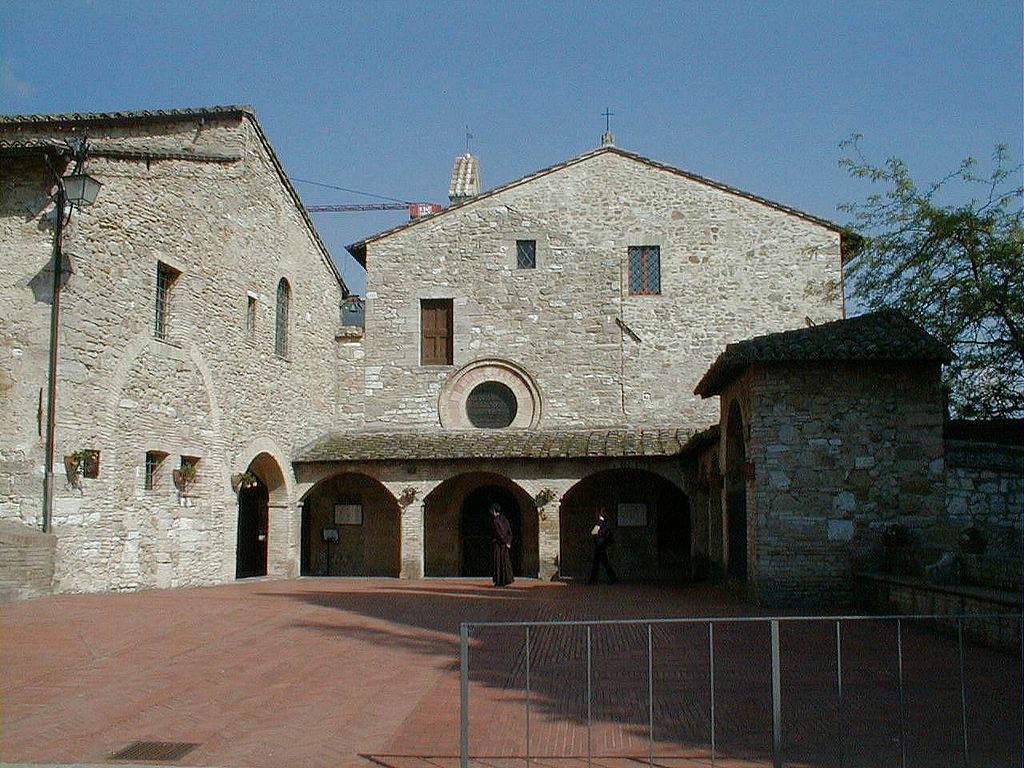
2. La Verna
Located in Tuscany, it is the place where St. Francis received the stigmata, in 1224, once he had retired to the mountain to face his periods of silence and prayer. That summer, the saint asked God if he could participate in Christ’s Passion in order to understand the mystery of love and pain and was heard by receiving his seals as a gift. La Verna is a place of mystical silence where the massive architecture holds many stories of spirituality, art and culture, teaching one to appreciate the peaceful tranquility and inviting one to fully embrace its beauty. A path leads from the sanctuary to Sasso Spicco, and halfway along the path one finds oneself in front of a door covered with nails that allows access to the cave where St. Francis used to sleep, resting on the bare stone.
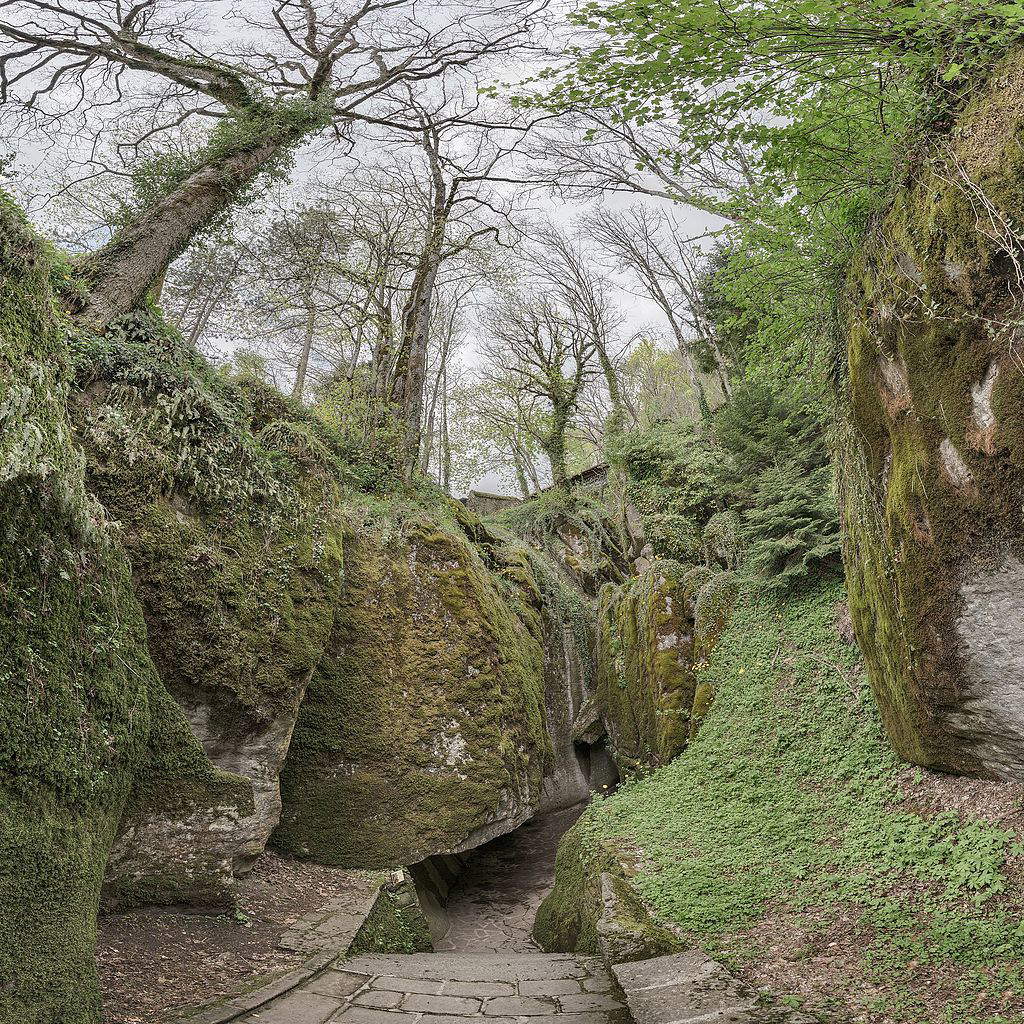
3. The Hermitage of the Prisons in Assisi.
In Assisi, within the forest of St. Francis, a peaceful place of centuries-old holm oaks and lush nature, is the Hermitage of the Prisons. “Prison” comes from the Latin carcer meaning a secluded and lonely place and not a prison, as one might mistakenly think, and this is in fact where St. Francis of Assisi and his companions spent their time, marking their days through prayer. Initially, the place was simply a large rocky block with caves used as cells and a central Oratory where the brothers could pray among themselves, but by the mid-14th century, the friars began to settle there and created the first dwellings that flowed into the more ambitious project we admire today. In 1400, thanks to St. Bernardine of Siena, the small Church, Choir, Refectory and Dormitory were built with small cells for the friars leaning against the rock.
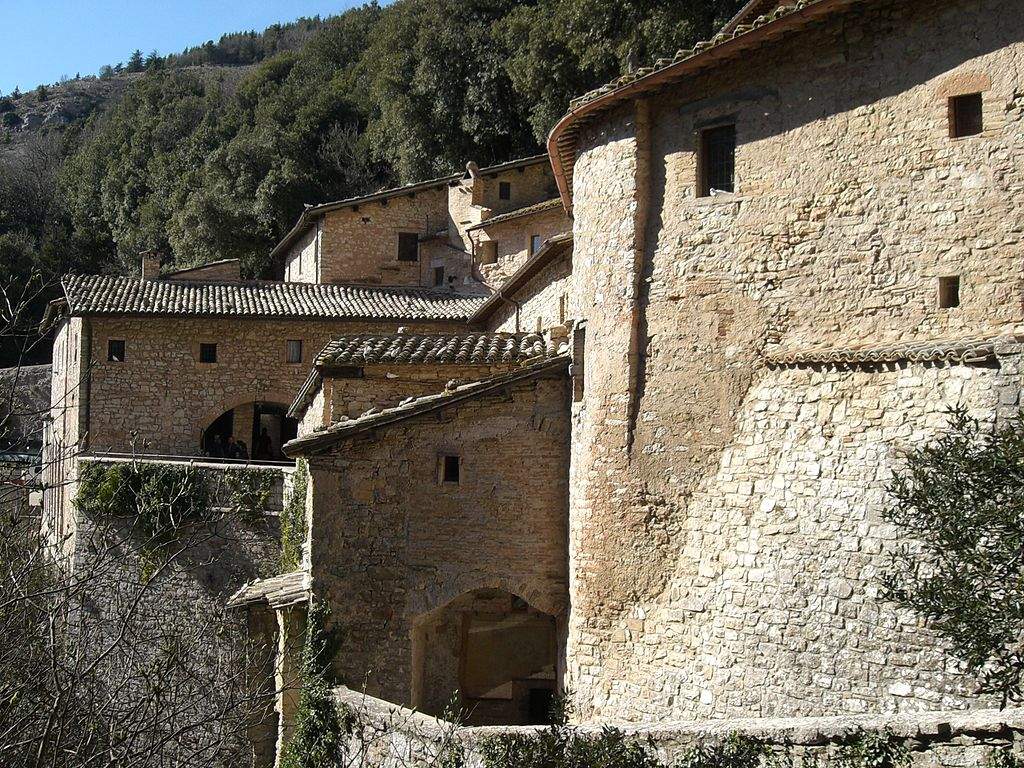
4. The Portiuncula
Crossing the threshold of the basilica of St. Mary of the Angels, at the foot of the hill on which Assisi stands, one glimpses the Portiuncula of Assisi, a small Romanesque church that literally signified the small portion of land on which it was built. This was the third church restored by the Poverello following the request for the Crucifix of San Damiano. Soon, the tiny church became a beloved place for him in which he gathered in prayer, studied the teachings of the Gospel and gathered his followers. The admirable frescoes on the chapel’s exterior wall depict the Death and Funeral of St. Francis and were executed in 1886 by the painter Domenico Bruschi, while the interior wall decorations belong to the 15th-century painter Giovanni di Pietro, who was one of Perugino’s most direct followers, and depict Franciscan saints and blessed.
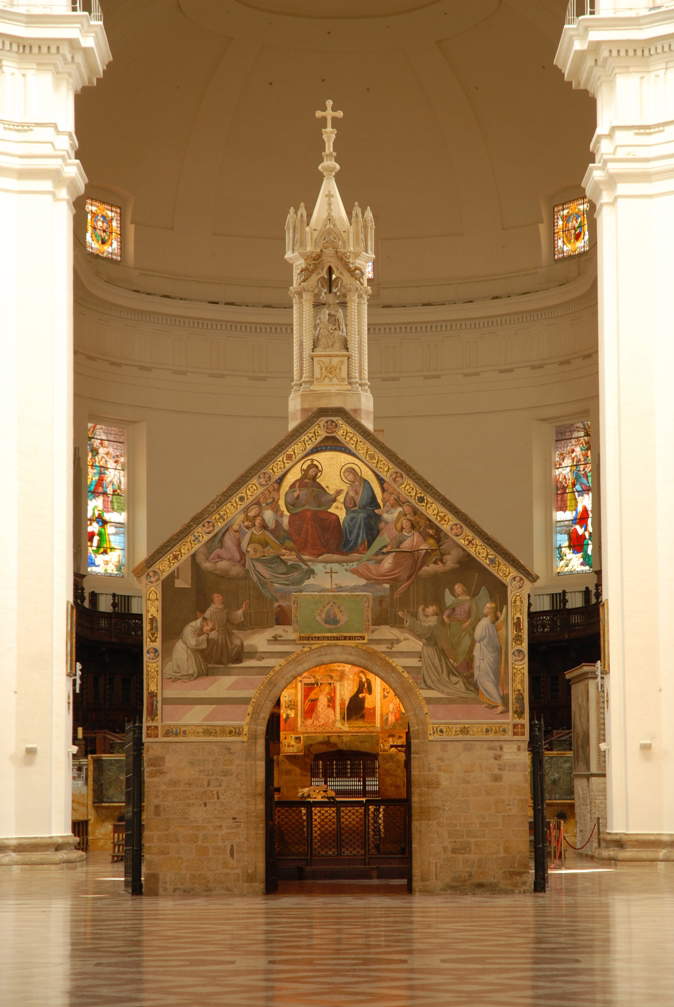
5. The Sacred Tugurium of St. Francis of Rivotorto.
Rivotorto was the first refuge of St. Francis’ followers, which simply consisted of two stone huts with a few rooms. In this abandoned “hovel,” St. Francis conceived and wrote the Rule on Sister Poverty and prayer. Three rooms can be visited today: The Room of Rest, on the left looking at the hovel which houses an 18th-century statue of a sleeping St. Francis, the Room of the Cross in the central room, and on the right the Room of Fire. In 1209 from Rivotorto he left for of Rome with ten companions to go to Pope Innocent III and the story tells of the endless vicissitudes and the fear that the Pope might mistake them as heretics. St. Francis, however, appeared in a dream to the pope as he was supporting the Church of Rome on his shoulders and, thanks to this, blessed the Rule, approving it.
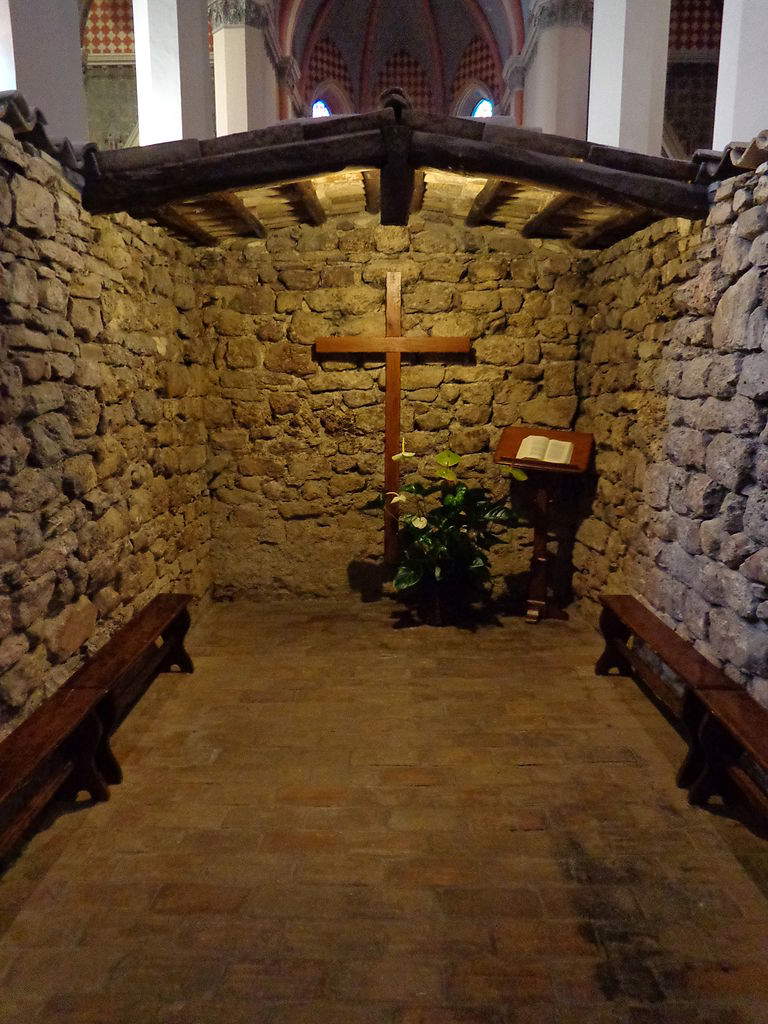
6. Gubbio
Rising on the slopes of Mount Ingino, this charming Umbrian town is linked to a famous legend of St. Francis about how the saint tamed a ferocious wolf that terrorized the town. Among the pages of the Fioretti of St. Francis we read, in fact, that the Poverello was dwelling in Gubbio when there “appeared there a very great, terrible and fierce wolf, so much so that all the citizens were in great fear and all went armed as if to fight,” but the friar without fear and with a heart full of compassion approached to the animal and said, “Brother wolf, I command you from the side of Christ that you do no harm to me or to any person... I promise you that I will have you fed as long as you live, so that you will no longer suffer hunger.” Among the streets of the city with its still medieval atmosphere runs the route known as “Brother Wolf” that allows pilgrims to walk among the city’s Franciscan sites (including the very church where the encounter between Francis and the wolf took place) whose arrival point is the 16th-century Basilica of St. Ubaldo, atop Mount Ingino, dedicated to Gubbio’s patron bishop.
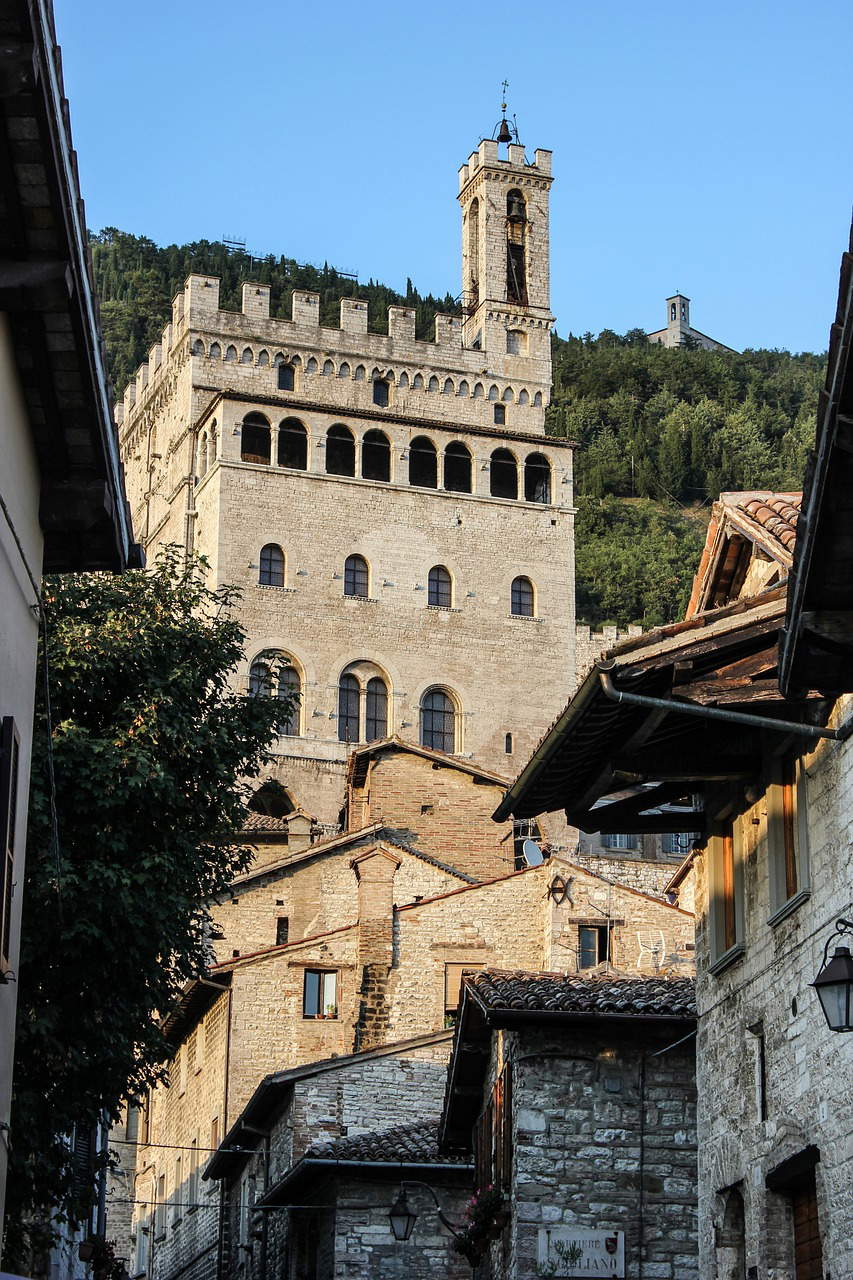
7. The church of St. Francis in Cortona
St. Francis visited Cortona during his trip to Tuscany, and the church dedicated to him is one of the town’s most important places of worship, preserving some of the saint’s belongings including his cassock, evangeliary and a cushion. A fragment of Christ’s cross, which, according to legend, was taken to Constantinople by Brother Elijah himself, is also kept inside the single-nave church with a trussed roof. The church was built at the behest of Brother Elias, the saint’s successor, who had the construction started in 1247 on the remains of a Roman bathhouse. Also of great artistic importance are the paintings inside, such as the Annunciation by Pietro da Cortona, the Virgin in Glory among the Saints by Ciro Ferri, up to the Nativity by Raphael Vanni.
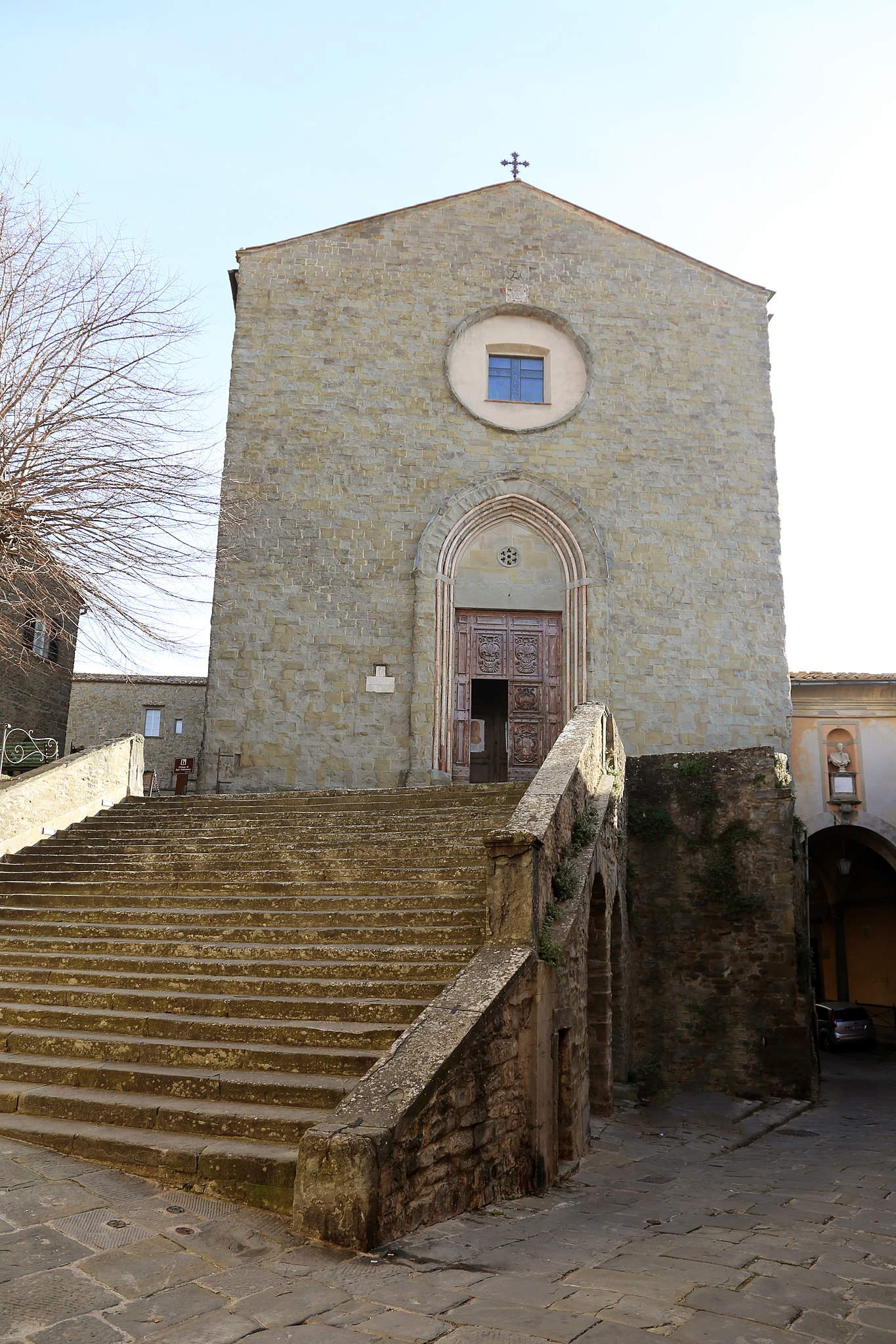
8. The Sanctuary of Fonte Colombo.
In September 1223 Francis went up to Fontecolombo, in Rieti, with Brother Leo, Bonizio da Bologna and a few other companions, and in this town, where the Sanctuary of Fonte Colombo and the Church of St. Francis are located, he received the approval of his Franciscan rule from Pope Innocent III. The shrine was, unfortunately, also a sad witness to the sufferings and illnesses endured by the friar, who, during his stay in 1225, was persuaded by Brother Elias to allow himself to be operated on for a serious eye disease that afflicted him from his pilgrimage to the Holy Land. The church was built in the second half of the 13th century and consecrated in 1450, and a wooden sculpture depicting the saint meditating at the foot of the Crucifix was later placed inside in the 17th century.
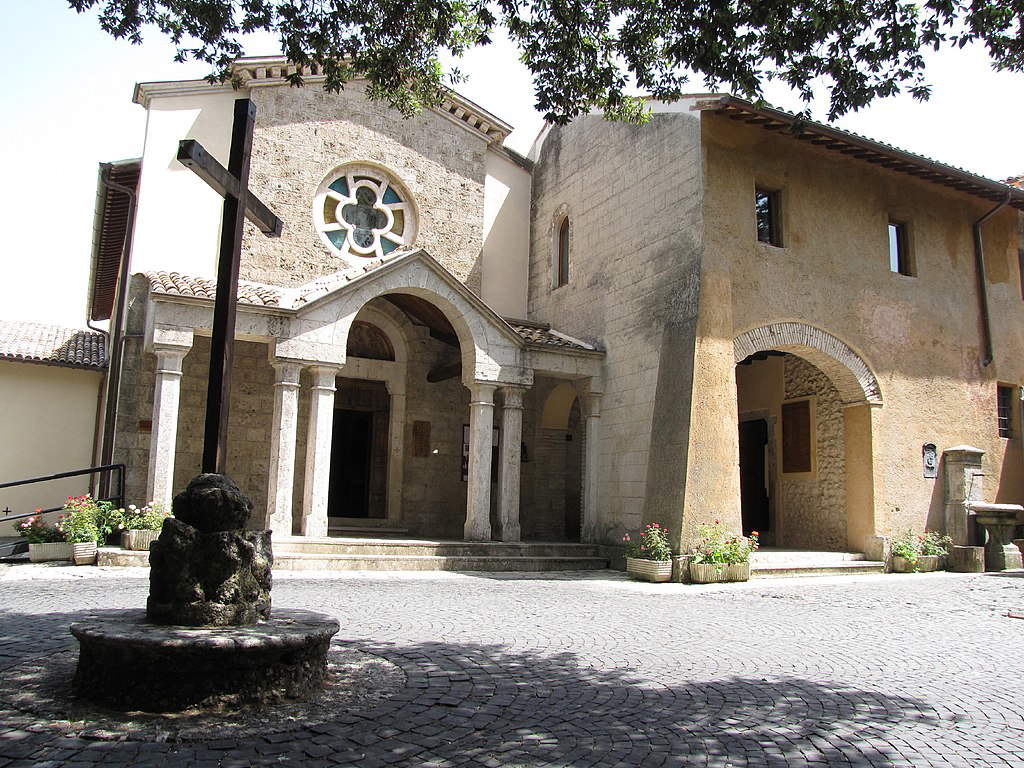
9. The church of St. Francis in Rieti.
In those same years a small oratory was born near the hospitale Santa Croce, built by the poor man of Assisi for the care of the sick, which became the first settlement of the Friars Minor. Construction began in 1246, and the façade today appears as severe, imposing and extremely simple in a Romanesque-Gothic style, while the interior is very large as typical of the churches of the mendicant orders, which wanted to accommodate as many of the faithful as possible. It has a Latin cross plan divided into three naves with a trussed ceiling and once richly inlaid with Baroque decoration, which was lost in the 1898 earthquake. On the walls it is still possible to admire frescoes of the Giotto school that tell scenes from the life of St. Francis.
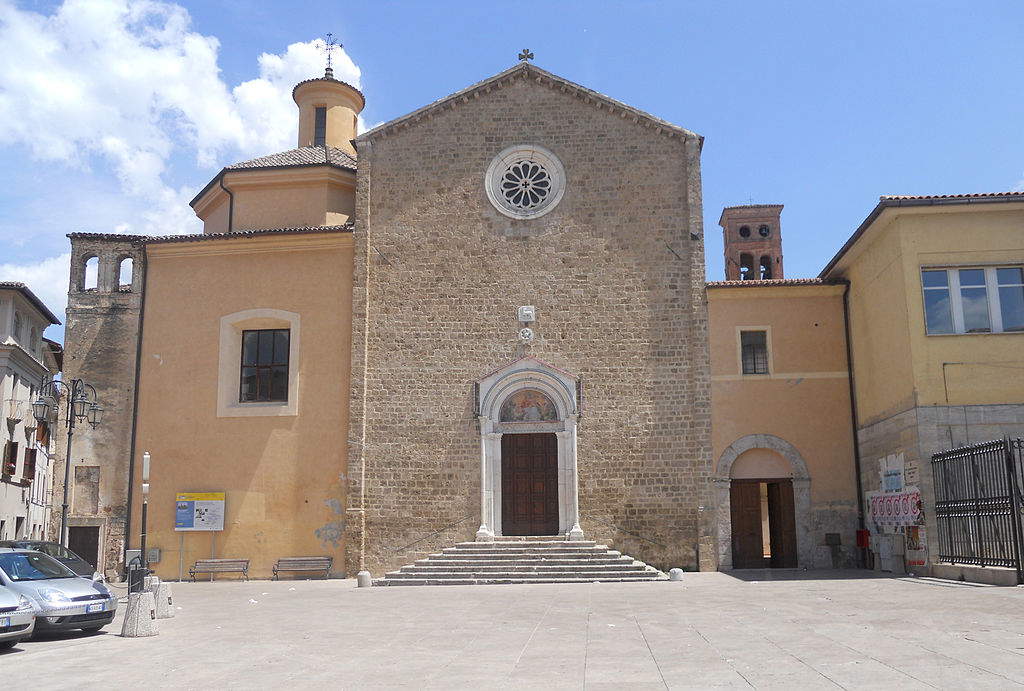
10. The Basilica St. Francis of Assisi
Buried beneath the altar of Assisi’s Lower Basilica is the body of St. Francis, whose tomb is accessed by two flights of stairs and, as a symbol of the sanctuary’s heart, was deliberately left bare. Initially his body was housed, temporarily, in the church of St. George, but on May 25, 1230, it was finally interred and transported to the, still under construction, basilica dedicated to him. It was Brother Elias who laid the Poverello’s body under the high altar, resting it in a stone sarcophagus weighing twelve quintals, encased in an iron cage, and, finally, covered with heavy slabs of travertine and concrete. In front of the friar’s tomb is placed a burning flame fueled by oil donated each year from a different Italian region for the October 4 feast day.
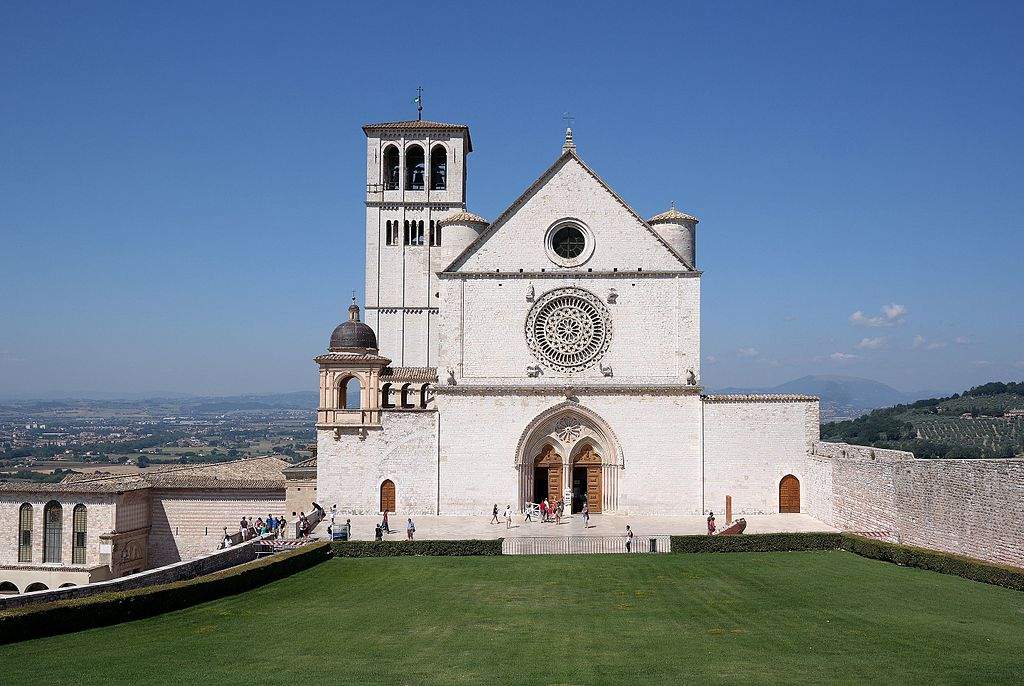
 |
| Discover the history of St. Francis in 10 places between Umbria and Tuscany |
Warning: the translation into English of the original Italian article was created using automatic tools. We undertake to review all articles, but we do not guarantee the total absence of inaccuracies in the translation due to the program. You can find the original by clicking on the ITA button. If you find any mistake,please contact us.




























